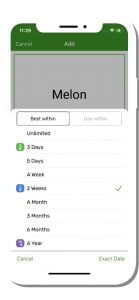
Today we talk about the game we all keep playing at home.
It’s called “Guess the Expiry Date”! Imagine reaching into the fridge and pulling out a tub of yogurt or a can of soup from the cabinet.
Drat. It’s expired. Into the trash, it must go—except, maybe it shouldn’t. Almost none of the dates stamped so carefully on our food packaging—“best by,” “sell by,” “use by”—indicate safety. They are manufacturer guidelines for when food is at its peak quality, a standard that is more concerned with taste and sales than consumer welfare.
What does “peak quality” mean?
For the majority of products, manufacturers use their own methods to determine what dates to list on the packaging. There’s a financial incentive for manufacturers to sell their products when they taste best so that consumers come back and buy those same products again and again. Peak quality is not a standard of microbiological safety. Rather, it is a factor defined by consumer taste testing, lab tests for shelf life and product turnover rates.

Key Terms and Phrases to Know
Open Date uses a calendar date on a food product. The Open Date is not a safety date, instead, this label tells how long to display the product for sale at the store.
Best if Used By (or Before) date is recommended for best flavor or quality. This is not a date to purchase by, nor is it an indication that the product is unsafe after this date.
Use By date is the date recommended to use the product by in order to have the best quality. This date has been determined by the manufacturer of the product. Even after the Use By date, a food should remain safe and wholesome if it has been properly stored and handled. The Use By date is required on infant formula because, over time, the formula can separate and clog the bottle’s nipple. Do not use infant formulas or similar medicinal food products such as oral nutritional supplements or meal replacements after its Use By date.
Closed or coded dates are packing numbers for use by the manufacturer.
Packaged on, Manufactured on or Prepared on. Packaging dates are closely related to best before dates and are intended to give consumers an idea of how long a product will maintain it’s quality. These dates are used on food products with a shelf life of 90 days or less.
Sell by or Freeze by dates are other voluntary markings used in Canada specifically, and can help the consumer make decisions about purchasing and storing food.
Canned foods are safe indefinitely except when they are exposed to freezing temperatures or temperatures above 90° (32.2°C). A general rule is if the cans are not rusted, dented, or swollen, they are safe for consumption; however, the following canned items are best used by the dates outlined below.

If you are unsure whether to keep or toss food that has passed its label date, a few websites offer comprehensive, lab-checked information. Of those, we can recommend StillTasty and EatByDate.
By looking up products on those websites you can improve your knowledge of how long food or beverage is safe and what is the best way to store them.
CozZo app provides the same information, by suggesting a realistic shelf life and the best storage place for nearly 1500 common foods. You can check if and how long the product can be stored in your fridge, pantry, or freezer. CozZo is also super-precise in tracking and reporting on the status of your groceries.
If the food is highly perishable, you will get a strict reminder and the product will be red-flagged. You will receive a gentle reminder for the foods that are starting to lose their flavor but are still safe to eat. A green flag will appear on your display.
To help you perfect your shopping and cooking routines, CozZo app checks your home inventory several times a day and reminders for products that need your attention are sent to the home screen of your phone.

CozZo Expiry Reminders
They allow for a quick product update even without opening the app. This helps boost or confidence when it comes to deciding if food is still good for us or our kids to eat.
In many cases, correct storage can prolong the shelf life of products. But we often store products suboptimally, meaning that the shelf-life is decreased. Some of us do this consciously, for instance placing in a fruit bowl to stimulate kids to eat healthy instead of placing them in the fridge.
But many of us do suboptimally due to a lack of correct knowledge on how to prolong product shelf-life. To overcome this particular skill deficit, for each item that is entered into the “at home” catalog, the CozZo app suggests the optimum storage place.
Knowing how to properly store food and which food to keep or throw away is a vital food planning skill. And whenever you feel unsure, we are here to help and boost your confidence.
Bonus read:
How to store food long-term: 24 Unexpected TIPS
Test your food storage Know-how with our specially designed quiz right here. You will find helpful tips and tricks after each answer.
Next, Stay tuned for our cooking advice. Don’t Overestimate Your Cooking Enthusiasm.


Comments are closed, but trackbacks and pingbacks are open.